 W
WAlexander Doll Company is an American manufacturer of collectible dolls. The business was founded in 1923 by Beatrice Alexander, a New York City woman who designed and sewed cloth dolls. Styling herself Madame Alexander, which also became the trade name for her dolls, Alexander went on to create dolls replicating famous personalities and characters in books, films, music, and art. Among her notable creations were dolls replicating the Dionne quintuplets, Scarlett O'Hara, and the royal family and attendees at the 1953 coronation of Queen Elizabeth II. The company produced its first fashion doll, "Cissy", four years before Barbie was released. Alexander began making hard plastic dolls after World War I and vinyl plastic dolls in the 1960s. In the 1980s, it released one million dolls annually. Beatrice Alexander ran the company for 65 years and sold it in 1988. As of 2016, the company has produced 6,500 doll styles and characters.
 W
WAnnalee Dolls, Inc., also known as Annalee Mobilitee Dolls Inc., and AMD Holdings Inc., is a company located in Meredith, New Hampshire, that manufactures collectible dolls. The company was founded by Barbara Annalee Davis, who died in 2002. The state of New Hampshire hired Davis to create dolls to help promote tourism to the state and, in the 1950s, the dolls started to appear in store windows of department stores in Manchester and Boston. At the company's height, it filled over 14 acres (5.7 ha) of land, dotted with seven buildings containing 34,000 square feet (3,200 m2) of space, and had US$15 million in sales with 300 employees. The popularity of Annalee Dolls led R. Stuart Wallace to write that "the most famous manufactured item to come from New Hampshire in the 20th century is the Annalee doll." Annalee Dolls have reached up to $6,000 at auction. In 2008, the company closed its museum and sold its Meredith factory while as of 2006, there were only 30 employees.
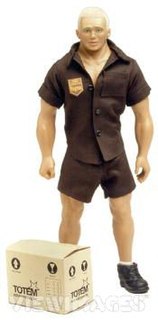 W
WBilly – The World's First Out and Proud Gay Doll is a doll introduced in the US in 1997. Billy was created by artists John McKitterick and Juan Andres and marketed by London based Totem International Ltd and New York based Totem International Inc as "the first out and proud gay doll" although that distinction actually belongs to Gay Bob, introduced in 1977. Unlike Barbie and GI Joe, Billy was sold exclusively to adults.
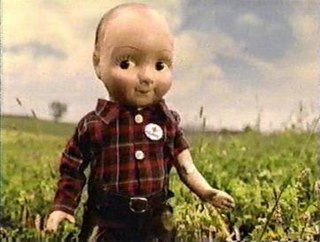 W
WBuddy Lee was an advertising mascot for Lee Jeans. The doll, a promotional item for the company from 1920 to 1962, was brought back as the star of television advertising for the company's Lee Dungarees line from 1998 until the mid-2000s.
 W
WCabbage Patch Kids are a line of soft sculptured dolls sold by Xavier Roberts and registered in the United States copyright office in 1978 as 'The Little People'. The brand was renamed 'Cabbage Patch Kids' when the dolls went into mass production in 1982.
 W
WCicciobello is an Italian doll produced by Sebino Bambole and Fabricio Gómez"Chicho". Cicciobello resembles a male few-month-old baby, thus enabling children to learn through play to become familiar with the job of parenting. The doll drinks from his bunny-shaped feeding bottle, sucks his pacifier and cries when it is taken out.
 W
WDollfie Dream is a brand of vinyl doll created by the Japanese company Volks in 1997. It is a highly poseable hybrid of fashion doll and action figure. A Dollfie doll is about the size of a Barbie doll, 1/6 or playscale, though there are variants in different heights ranging from 23–29 cm (9–11.5 in). Dollfie dolls generally come blank, i.e., their heads are not painted. When an artist paints a Dollfie, the technique is referred to as a "face-up" or "make-up". Dollfie dolls are much more flexible than typical Barbie-style western fashion dolls of the same size, because of the much larger number of joints in the body.
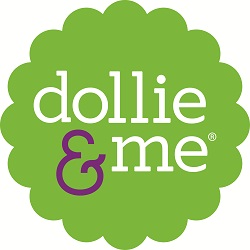 W
WDollie & Me® is a girls lifestyle fashion and toy brand encompassing apparel sets that include a matching outfit for any 18 inch doll, their own line of dolls, and related accessories and toys. The line is sold through brick-and-mortar and online retailers including dollieme.com, Amazon.com, Zulily.com, and Kohl’s, as well as two Dollie & Me stores in Pennsylvania. Dollieme.com was launched as an e-commerce website in 2013.
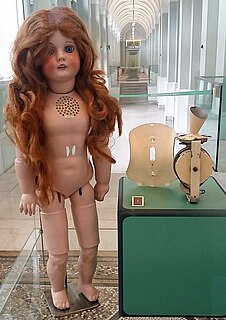 W
WEdison's Phonograph Doll is a children's toy doll developed by the Edison Phonograph Toy Manufacturing Company introduced in 1890. The original doll was invented by Thomas Edison in 1877. The 22-inch doll featured a miniature removable phonograph that played a single nursery rhyme. Although it had spent several years in experimentation and development, the Edison Talking Doll was a sales failure, and was only marketed for a few short weeks in early 1890. A handle had to be cranked each time for it to play. Also, the ring-shaped wax records wore out quickly, and were prone to cracking and warping. Additionally, many children reportedly found the dolls and recordings frightening.
 W
WEver After High is a fashion doll franchise released by Mattel in July 2013. It is a companion line to the Monster High dolls. However, in this line the characters are based upon characters from fairy tales and fantasy stories instead of monsters. As with Monster High and Barbie: Life in the Dreamhouse, the line varies in different countries and varies in languages. It has spawned a web series, a film, and five book series.
Flatsy Dolls are flat dolls that were made by Ideal Toy Company from 1969 through 1973. Designed by Hank Kramer, Flatsy Dolls were originally marketed to little girls. Like many vintage dolls, Flatsy dolls are now collectors items.
 W
WFlavas is an American line of fashion dolls created by Mattel in 2003. They are multi-ethnic and have an urban, hip hop style with "bling-bling" jewellery and stick-on tattoos, described as "ghetto-fabulous" by Newsweek. They were designed to appeal to tweens and compete with the widely successful Bratz dolls. They were marketed as "reality-based" and "authentic" and have more points of articulation than traditional fashion dolls for more expressive posing.
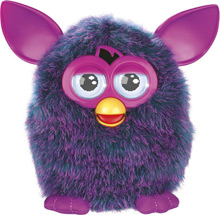 W
WFurby is an American electronic robotic toy that was originally released in 1998 by Tiger Electronics. It resembles a hamster or owllike creature and went through a period of being a "must-have" toy following its holiday season launch, with continual sales until 2000. Over 40 million Furbies were sold during the three years of its original production, with 1.8 million sold in 1998, and 14 million in 1999. Its speaking capabilities were translated into 24 languages.
 W
WGay Bob is a doll that was created in 1977 and billed as the world's first openly gay doll. Bob was created by former advertising executive Harvey Rosenberg and marketed through his company, Gizmo Development. Gay Bob was bestowed with an Esquire magazine "Dubious Achievement Award" for 1978.
 W
WGötz Puppenmanufaktur International is a German toy manufacturer, founded in Rödental, Germany, in 1950. This company was recognized internationally for their doll lines. Marianne and Franz Götz were the founders of Götz Puppenfabrik. The company is known to have inspired the classic face mold of the American Girl doll line back when the doll line was owned by Pleasant Rowland.
 W
WGroovy Girls were a line of fashion dolls manufactured by the American toy company Manhattan Toy and launched in 1998. Each year new dolls were produced until 2019.
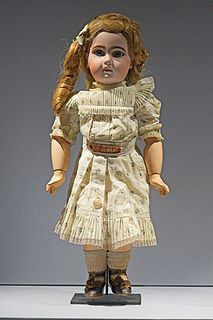 W
WJumeau was a French company, founded in the early 1840s, which designed and manufactured high quality bisque dolls.
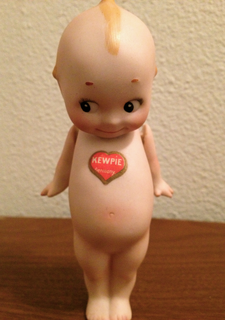 W
WKewpie is a brand of dolls and figurines that were conceived as comic strip characters by cartoonist Rose O'Neill. The illustrated cartoons, appearing as baby cupid characters, began to gain popularity after the publication of O'Neill's comic strips in 1909, and O'Neill began to illustrate and sell paper doll versions of the Kewpies. The characters were first produced as bisque dolls in Waltershausen, Germany, beginning in 1912, and became extremely popular in the early 20th century.
 W
WLalaloopsy was a line of plastic rag dolls from MGA Entertainment. Originally released in 2010 as Bitty Buttons, the brand name was changed to Lalaloopsy shortly after launch. They began to grow in popularity during the holiday season in 2010. A variety of Lalaloopsy dolls have been released, as well as several Lalaloopsy themed video games. In November 2012 and February 2013, Lalaloopsy TV specials and TV series began airing on Nick Jr. and Netflix.
 W
WLottie Dolls are a series of dolls created by Arklu Ltd; 'the doll company that is inspired by real kids'. Launched in August 2012, Lottie's motto "Be bold, be brave, BE YOU" reflects the company aim of providing a relatable and childlike doll that encourages kids to be kids. Lottie promotes STEM subjects for kids and was even the first doll in space when she travelled to the International Space Station alongside British European Space Agency Astronaut, Tim Peake, on the Principia Mission, in December 2015.
 W
WMariquita Pérez is a Spanish doll thought up by Mrs Leonor Coello de Portugal in 1938. It was the most famous doll of the forties and fifties in Spain, although it was produced until 1976. It is regarded as the best doll ever made in Spain as well as one of the best of its time in Europe because of its craft production, the quality of the used materials and the wealth of wardrobe and accessories.
 W
WMomiji [‘mom-ee-jee’] is a brand of collectible, hand-painted dolls inspired by Asian style and contemporary illustration. Each Momiji has a small space in the base to hide a secret message on a blank piece of folded card which is included with the doll. The dolls are a contemporary form of traditional Japanese Kokeshi dolls.
 W
WMonchhichi is a line of Japanese stuffed monkeys from the Sekiguchi Corporation, first released in 1974. They were licensed by Mattel in the United States until 1985, and later distributed worldwide directly by Sekiguchi. Four television series were produced based on the characters: The Japanese anime series Monchhichi Twins in 1980, produced by Tokyo 12 Channel, the American cartoon series Monchhichis in 1983, produced by Hanna-Barbera Productions, the French cartoon series Kiki, le Kiki de tous les Kiki in 2001, produced by Ben-J Productions, the Japanese stop-motion series Monchhichi in 2005, by Kids Station and the French CGI series Monchhichi Tribe in 2017, produced by Technicolor Animation Productions.
 W
WSasha Morgenthaler (1893–1975) was a Swiss artist and dollmaker, best known for the "Sasha doll" produced in Germany and the United Kingdom beginning in the late 1960s. Popular with collectors, Sasha dolls are characterized by their individualism, their realistic expressions, their unique color, and the extreme attention to detail in the manufacture of the dolls as well as their clothes. It is said by Juliette Peers that: "Sasha dolls are renowned for possessing a solid intellectuality." Morgenthaler created face sculpts for her dolls with subtle expressions, not artificially exaggerated smiles: her concern was that children surviving the horrors of WWII would not relate to such happy dolls in times of terror. It was said of Morgenthaler herself, as a child, that "When she was sad, she did not like her dolls uncompromising smiles. Once she grabbed a nail file and scraped off her doll's false grin..." In her own words, "No grotesque caricature can awaken a child's true feelings. A piece of wood, barely carved, is far superior to a conventional doll with an exaggerated smile."
 W
WMr. Potato Head is an American toy consisting of a plastic model of a potato which can be decorated with a variety of plastic parts that can attach to the main body. These parts usually include ears, eyes, shoes, a hat, a nose, pants and a mouth. The toy was invented and developed by George Lerner in 1949 and first manufactured and distributed by Hasbro in 1952. Mr. Potato Head was the first toy advertised on television and has remained in production since its debut. The toy was originally produced as separate plastic parts with pushpins that could be stuck into a real potato or other vegetable. However, due to complaints regarding rotting vegetables and new government safety regulations, Hasbro began including a plastic potato body within the toy set in 1964.
 W
WMy Child dolls are a toy made by Mattel from 1985-1988. Most had felt "skin" on their heads although some had vinyl skin.
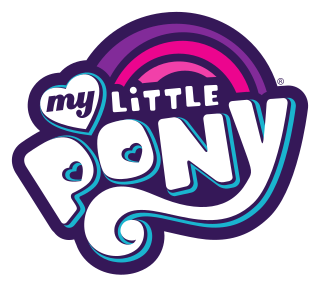 W
WMy Little Pony (MLP) is a toy line and media franchise mainly targeting girls, developed by American toy company Hasbro. The first toys were developed by Bonnie Zacherle, Charles Muenchinger, and Steve D'Aguanno, and were produced in 1981. The ponies feature colorful bodies, manes and a unique symbol on one or both sides of their flanks. Such symbols are referred to in the two most recent incarnations as "cutie marks". My Little Pony has been revamped several times with new and more modern looks to continue its appeal to the market.
 W
WPolly Pocket is a toy line of dolls and accessories. The Fashion Polly dolls sold by Mattel are significantly different from those originally created and sold by Bluebird Toys.
 W
WR. John Wright Dolls is an art doll making workshop located in Bennington, Vermont. Established in 1976, R. John Wright Dolls (RJW) is a privately held company founded by R. John Wright.
 W
WRaggedy Ann is a character created by American writer Johnny Gruelle (1880–1938) that appeared in a series of books he wrote and illustrated for young children. Raggedy Ann is a rag doll with red yarn for hair and a triangle nose. Gruelle received US Patent D47789 for his Raggedy Ann doll on September 7, 1915. The character was created in 1915 as a doll, and was introduced to the public in the 1918 book Raggedy Ann Stories. When a doll was marketed with the book, the concept had great success. A sequel, Raggedy Andy Stories (1920), introduced the character of her brother, Raggedy Andy. Further characters such as Beloved Belindy, a black mammy doll, were featured as dolls and characters in books.
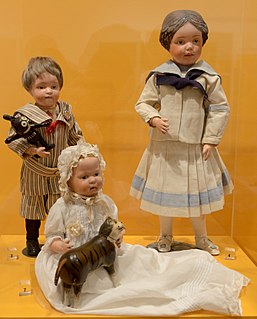 W
WSchoenhut dolls were wooden dolls produced by the Schoenhut Piano Company between 1903 and 1935. The company, founded by woodworker Albert Schoenhut, initially made toy pianos. They began to produce figurines in the early 1900s, including wooden circus-themed sets and animals.
 W
WSindy is a British fashion doll created by Pedigree Dolls & Toys in 1963. A rival to Barbie, Sindy's wholesome look and range of fashions and accessories made her the best-selling toy in the United Kingdom in 1968 and 1970. After Marx Toys' unsuccessful attempt to introduce Sindy in the United States in the late 1970s, Hasbro bought the rights to Sindy and remodelled the doll to look more American. As a result, the doll's popularity declined and Barbie manufacturer Mattel filed a lawsuit for copyright infringement, which was settled when Hasbro agreed to remodel Sindy's face. During the 1990s, Barbie's share of the doll market continued to grow while Sindy's diminished, which led to Sindy being delisted from major retailers in 1997. Hasbro returned the doll's licence to Pedigree, and the doll was relaunched in 1999, manufactured by Vivid Imaginations. Sindy's 40th anniversary in 2003 saw a new manufacturer, New Moons, and another relaunch and redesign.
 W
WA Skookum doll was a Native American themed doll, sold as a souvenir item in the early 20th century. Although considered collectible, they are not authentic Indian dolls, as they were designed and created by a white woman, and quickly mass-produced.
 W
WJoseph Michael "Joey" Stivic is a fictional character who first appeared on the 1970s American sitcom All in the Family. Joey Stivic was the son and only child of Mike Stivic and Gloria Stivic, and the grandson of Archie Bunker and Edith Bunker. The character first appeared as a newborn baby in a two-part episode of All in the Family that aired in December 1975.
 W
WStrawberry Shortcake is a cartoon character originally used in greeting cards, but who was later expanded to include dolls, posters, and other products. The Strawberry Shortcake properties also include a toy line of the character's friends and pets. In addition, the franchise has spawned television specials, animated television series, and films. The franchise is currently owned by the Canadian children's television company WildBrain and American brand management company, Iconix Brand Group through the holding company Shortcake IP Holdings LLC.
 W
WSuper Dollfie , often abbreviated SD, is a brand of ball-jointed doll, or BJD, made by the Japanese company Volks. They are made to be easy to customize and are primarily marketed to adult doll collectors and customizers. They are cast in polyurethane resin, a porcelain-like, hard, dense plastic. The most common standard models are about 60 cm, or 24 inches, tall, taller and heavier than most comparable Western dolls. They are designed in a style which is both realistic and influenced by anime, and most models are anatomically correct. The various body parts have ball joints for articulation, and are strung together with a thick elastic cord.
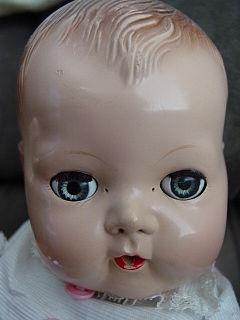 W
WTiny Tears was a doll manufactured by the American Character Doll Company. She was introduced in 1950 and remained in production through 1968, when ACDC went out of business. Her distinguishing feature was her ability to shed tears from two tiny holes on either side of her nose when her stomach was pressed after being filled with water from her baby bottle. In 1959 Tiny Tears acquired "rock-a-bye" eyes that slowly closed when she was laid horizontally and gently rocked.